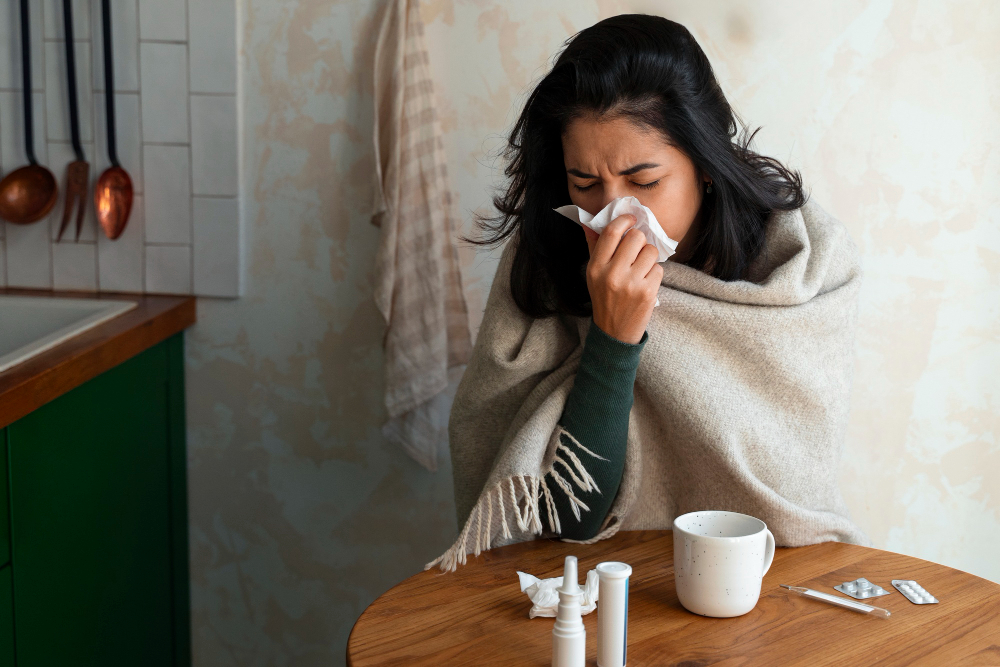When flu season hits, it’s important to recognize the differences between Flu A and Flu B symptoms. Both types of influenza viruses can make you feel miserable, but understanding their nuances can help you take the right steps for treatment and prevention.
This guide will help you learn more about Flu A and Flu B symptoms, who’s at risk, and what to do if you or a loved one gets sick.
What Are Flu A and Flu B?
Flu A and Flu B are two major types of influenza viruses that cause seasonal flu outbreaks. Here’s how they differ:
- Flu A: Known for being more widespread and severe, Flu A viruses can infect both humans and animals. These viruses are responsible for pandemics and tend to spread quickly.
- Flu B: Flu B viruses, on the other hand, only affect humans. While they’re generally less severe, they can still cause significant illness, especially in children and high-risk individuals.
Key Differences in Symptoms: Flu A vs Flu B
While Flu A and Flu B share many symptoms, some differences might indicate which type of virus you’re dealing with.

Who Is Most at Risk?
Both Flu A and Flu B can affect anyone, but certain groups are more vulnerable:
- Flu A Risks: Older adults, young children, pregnant individuals, and those with chronic conditions are at higher risk of severe complications.
- Flu B Risks: Children and teenagers are particularly susceptible to Flu B, as well as those in close-contact environments like schools or daycares.
How to Protect Yourself from the Flu
- Get Vaccinated: Flu vaccines are updated annually to target the most common Flu A and Flu B strains for the season. Make sure you get your flu shot early.
- Practice Good Hygiene: Wash your hands frequently, cover your mouth when coughing, and avoid touching your face.
- Stay Home When Sick: If you’re feeling under the weather, rest and avoid contact with others to prevent spreading the virus.
- Boost Immunity: Stay healthy by eating nutritious foods, exercising regularly, and getting enough sleep.
What to Do If You Catch the Flu
- Stay Hydrated: Drink plenty of fluids to prevent dehydration.
- Use Over-the-Counter Relief: Medications like acetaminophen or ibuprofen can help reduce fever and muscle aches.
- Seek Medical Attention: If symptoms worsen or you’re in a high-risk group, consult a doctor. Antiviral medications like Tamiflu can reduce the severity and duration of the flu if taken early.
When to See a Doctor
Seek immediate medical care if you or someone you know experiences:
- Difficulty breathing or chest pain.
- Persistent high fever.
- Severe dehydration or confusion.
- Symptoms that improve but then worsen again.
Conclusion
Flu A and Flu B might seem similar, but understanding their unique symptoms and risks can make a big difference in managing your health this flu season.
By staying informed, practicing prevention, and acting quickly when symptoms appear, you can protect yourself and your loved ones from the worst of the flu.

cKeOF8gl1tk
LajX99q6O2b
Sb0ggJlZrwa
NAeoB7eOpAS
Dl41Bpbpf8A
r9y5yAhC5Gi
1CLndIq72o1
6An82bNcwpn
TzVK2kWm25s
jZgMKv4vZxL
lHxPb1myBDv
ktS2rXxSqyU
eY0a7p1uay8
5sSoZ1ovUpu
Kovb35hpBxQ
0HleGHveaPD
gA8O7dryYBJ
FLxHadfnllP
CaVvYDiv4Ka
DnYSG5taLPe
UsfRSp8YbvL
13rkXYPCUJ0
fn8f7TyOXXb
QWifFrPE2ri
DXtMs2ZPKGl
ZuXq8epvfkr
AQVc38DHRwT
GwyIIVduq3r
rQc5sjchVYX
0We27jC74uZ
yXTvCg2vsWp
8FEIqOJj6od
jINHt76vWhK
Av9HHVszSg7
TQJHFjpu1jy
G88club, alright! This one’s got a good vibe going on. Feels like everyone’s just hanging out and having a good time. Join the club! Find it here: g88club